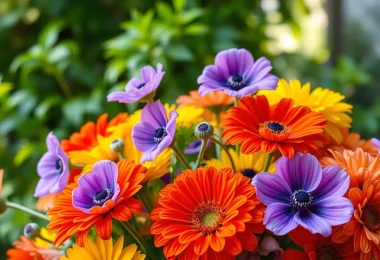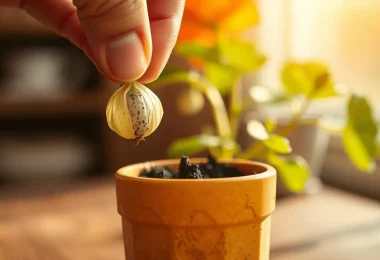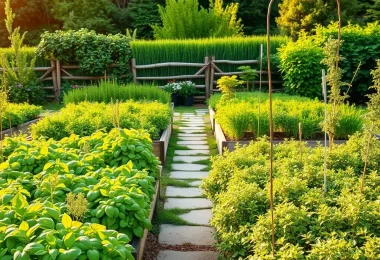While walking through my local nursery last spring, a shrub caught my eye. It had delicate white blossoms and vibrant green leaves. The label said “Amelanchier” – a name I’d never seen before. It would soon become a favourite in my garden.
This shrub, also known as the Serviceberry or Juneberry, is great for UK gardens. It’s easy to care for and brings many benefits. From its beautiful spring flowers to its tasty berries, it’s a joy all year round. Here are the top five reasons to grow an Amelanchier in your garden.
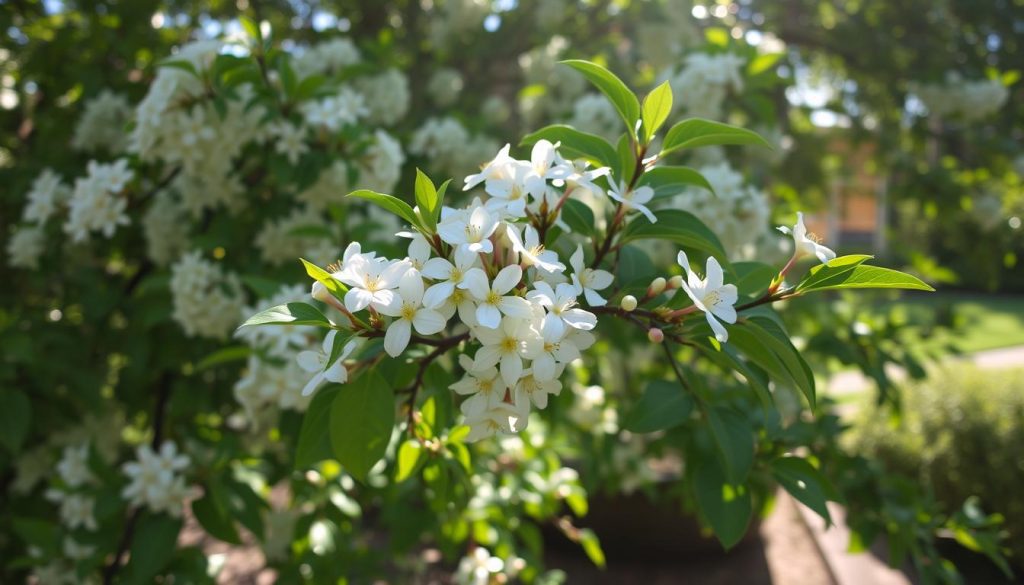
Key Takeaways
- The Amelanchier, also known as the Serviceberry or Juneberry, is a versatile and low-maintenance shrub that thrives in UK gardens.
- It offers a stunning display of white blossoms in spring, followed by tasty edible berries and brilliant autumn foliage.
- The Amelanchier is a multi-seasonal delight that attracts wildlife and is easy to cultivate.
- It can be used as a hedge, shrub, or small tree, making it a versatile choice for various garden designs.
- With its hardy nature and ornamental features, the Amelanchier is a must-have for any UK gardener looking to add a touch of natural beauty to their outdoor space.
Introduction to the Amelanchier
The Amelanchier is a part of the Rosaceae family. It includes several species found in North America and Europe. These plants are known as Serviceberry, Juneberry, and Shadbush. The most well-known types are Amelanchier lamarckii, Amelanchier canadensis, and Amelanchier arborea.
What is an Amelanchier?
The Amelanchier, or Serviceberry, is a plant that grows well in many climates. It is loved for its beautiful spring flowers, tasty berries, and stunning autumn leaves. It’s great for gardens because it looks good all year and attracts wildlife.
Varieties of Amelanchier
There are many different Amelanchier types, each with its own special features:
- Amelanchier lamarckii (Downy Serviceberry): A small tree or large shrub from Europe, known for its white flowers and purple-black berries.
- Amelanchier canadensis (Shadbush): A North American species famous for its white flowers that bloom early in spring.
- Amelanchier arborea (Allegheny Serviceberry): A tree from the eastern United States, loved for its bright autumn colors.
These Rosaceae amelanchier species are all useful in gardens and landscapes around the world.
Hardy and Low-Maintenance
The Amelanchier, part of the Rosaceae family, is known for being hardy and easy to care for. It’s perfect for UK gardens. These plants grow well in many soils and weather conditions, handling both sun and shade.
What makes the Amelanchier stand out is how little care it needs. Unlike many plants, it doesn’t require much pruning or upkeep. This makes it great for both experienced gardeners and beginners. It adds beauty to your garden with its flowers and leaves.
The Amelanchier is loved in UK gardens for its toughness. It can handle cold winters, making it a reliable choice all year. It also grows well in different soils, from sandy to clay, making it easy to grow.
“The Amelanchier is a true garden workhorse, thriving with minimal fuss and effort. Its hardy nature and low-maintenance requirements make it an ideal choice for busy gardeners and novices alike.”
Looking for a Amelanchier to be a highlight, a colourful hedge, or a flowering shrub? These plants are easy to care for. They bring beauty to your garden all year round.
related: How to Grow and Care Creeping myrtle
Stunning Spring Blossoms
The amelanchier, part of the rosaceae family, is famous for its stunning spring show. As spring arrives, these plants explode with clusters of delicate flowers. They capture the senses with their beauty.
Colours and Fragrances
The flowers of the amelanchier lamarckii range from pure white to soft pink. Some varieties also have a lovely fragrance. This makes the plant even more beautiful.
“The amelanchier’s spring blooms are a true delight, painting the landscape with their ethereal beauty and enchanting scents.”
The amelanchier’s spring display is truly remarkable. These flowers start to bloom in early to mid-spring. They signal the start of warmer weather. Whether you love the classic white or the soft pink, these plants will amaze and delight you.
| Variety | Flower Colour | Fragrance |
|---|---|---|
| Amelanchier lamarckii | White to pale pink | Delicate |
| Amelanchier canadensis | Pure white | Subtle |
| Amelanchier alnifolia | White to light pink | Moderately fragrant |
Edible Fruit for Garden Delights
The amelanchier is not just a sight to behold in spring. It also gives a rich harvest of tasty berries. These small fruits are juicy and sweet, perfect for eating fresh or in desserts. They add beauty and flavour to any garden.
The amelanchier canadensis, or Serviceberry, is famous for its fruit. Its berries are a mix of purple and red, tasting like a mix of blueberries and raspberries. They’re great in both sweet and savoury dishes.
The amelanchier lamarckii offers a special treat. Its berries are bigger and pear-shaped, turning a deep purple when ripe. They have a hint of almond, making them a joy to eat and cook with.
“The amelanchier berries are a true garden treasure, offering a delectable taste of the seasons and endless culinary possibilities.”
Enjoying amelanchier berries fresh or in your favourite dishes is a treat. They bring charm and versatility to any garden. These berries will quickly become a favourite in your garden.
Brilliant Autumn Foliage
As the seasons change, the amelanchier, a member of the Rosaceae family, truly shines with its vibrant autumn foliage. The leaves of the amelanchier lamarckii transform into a stunning array of fiery hues. They range from deep reds and oranges to rich purples and burgundies. This seasonal display adds a captivating element to the garden, making the rosaceae amelanchier a year-round source of visual interest.
Fiery Hues
The autumn foliage of the amelanchier is a sight to behold. The leaves burst into a vibrant tapestry of colours, creating a breathtaking contrast against the greens of the garden. As the days grow shorter and the temperatures drop, the amelanchier lamarckii showcases its true brilliance, lighting up the landscape with its fiery hues.
Whether planted as a standalone specimen or incorporated into a mixed border, the rosaceae amelanchier is a true autumn showstopper. Its magnificent autumn display adds a touch of drama and beauty to any garden. It makes it a must-have for those seeking a long-lasting and visually stunning addition to their outdoor space.
“The amelanchier is a true autumn gem, transforming the garden into a fiery wonderland with its stunning foliage display.”
Versatile Landscaping Options
The Amelanchier, a member of the Rosaceae family, is very versatile. It fits well into many garden designs. You can use it for a formal hedge, a charming shrub, or a small tree.
Hedges, Shrubs, and Trees
The Amelanchier is great because it can be many things. You can shape it into a neat hedge for privacy. Or, let it grow naturally as a shrub for a more relaxed look.
It also makes a beautiful small tree. Its spring flowers and autumn colours stand out.
| Landscaping Use | Description |
|---|---|
| Hedges | The Amelanchier can be trimmed into a neat, formal hedge, providing privacy and structure to the garden. |
| Shrubs | Left to grow naturally, the Amelanchier forms a charming, multi-stemmed shrub, adding informal beauty to naturalistic plantings. |
| Trees | Cultivated as a small tree, the Amelanchier becomes a focal point, with its delicate spring blossoms and vibrant autumn foliage. |
No matter how you use it, the Amelanchier is a great choice for UK gardens. It can improve many landscaping styles.
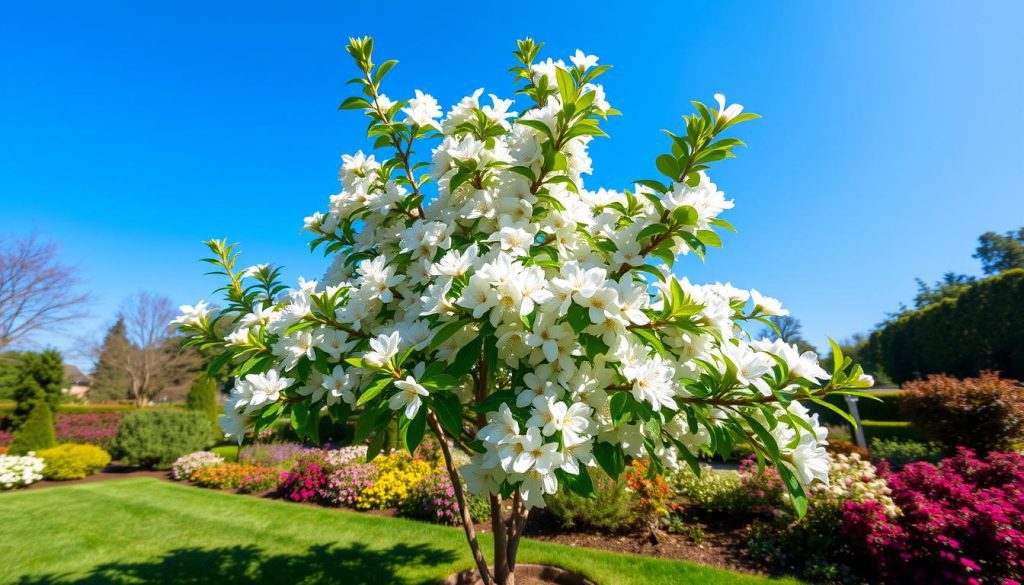
Attracts Wildlife
The amelanchier, part of the rosaceae family, is a wildlife lover’s dream. Its flowers and berries are full of nectar and nutrients. This attracts bees, butterflies, birds, and small mammals.
The amelanchier lamarckii blooms for a long time. Its white flowers in spring feed many pollinators. This includes honeybees, bumblebees, and butterflies.
- The amelanchier’s flowers are full of nectar, drawing in many pollinators.
- The berries that come after the flowers are a hit with birds and small mammals. They offer a nutritious snack.
- The plant’s leaves and structure provide shelter and nesting spots for many wildlife species.
Adding the amelanchier to your garden is a win-win. You get to enjoy its beauty and help create a balanced ecosystem. This plant is great for attracting and supporting wildlife, making it a must-have for any garden.
“The amelanchier is a true magnet for wildlife, drawing in a diverse array of pollinators, birds, and small mammals. Its blooms and berries provide a valuable food source, while its foliage offers essential shelter and nesting sites. Incorporating this plant into your garden is a wonderful way to support a healthy, balanced ecosystem.”
Amelanchier: A Multiseasonal Delight
The amelanchier, part of the rosaceae family, is a gem in UK gardens. It dazzles all year round, making it perfect for garden lovers. Its beauty ranges from spring flowers to autumn leaves and tasty summer berries.
In early spring, the amelanchier wows with its white flowers. These blooms are not just beautiful but also fill the air with a lovely scent. They attract many pollinators to the garden.
As the seasons change, the amelanchier keeps impressing. Its leaves turn into a stunning mix of reds, oranges, and purples in autumn. This makes the amelanchier a standout, adding beauty and drama to any garden.
In summer, the amelanchier offers a treat with its juicy berries. These can be eaten fresh or used in cooking. They add a sweet flavour to pies, jams, and even cocktails, making the amelanchier a true delight.
“The amelanchier is a true multi-season superstar, captivating gardeners with its beauty and bounty throughout the year.”
The amelanchier is essential for any UK garden. It offers something special from spring to summer, with its flowers, leaves, and berries. This plant is a true delight, enchanting both gardeners and wildlife.

Easy to Cultivate
The amelanchier, part of the rosaceae family, is easy to grow. It does well in many soils and light conditions. This makes it perfect for gardeners of all skills.
Soil and Sunlight Requirements
The amelanchier lamarckii likes well-drained, slightly acidic soil. But it can also handle more neutral pH levels. It can grow in full sun to partial shade, giving gardeners lots of options.
These plants need little care but offer big beauty. Their ability to grow in different places and their beautiful seasons make them a top pick. They’re ideal for anyone wanting a beautiful, easy garden feature.
“The amelanchier is the perfect choice for gardeners who want to add a touch of natural beauty to their space without the hassle of constant care.”
Whether you’re a seasoned gardener or just starting, the amelanchier is a great choice. It grows well with little effort, adding joy to your garden all year.
Ornamental and Functional
The Amelanchier, part of the Rosaceae family, is both beautiful and useful. It adds beauty to gardens and provides food for wildlife. This makes it a great choice for gardeners.
The Amelanchier is special because it serves two purposes. It looks great with its spring flowers and autumn leaves. Plus, its berries are tasty for people and animals. This makes it a favourite for those who want beauty and usefulness in their gardens.
The Amelanchier lamarckii, or Serviceberry, is a great example. It’s a beautiful shrub or small tree with white flowers and colourful leaves. Its berries are loved by birds and other animals. This makes the garden a welcoming place for wildlife.
If you want to make your garden more interesting, the Amelanchier is a good choice. It adds beauty and helps wildlife. It’s a great option for those who want a garden that’s both beautiful and useful.

“The Amelanchier is a true garden gem, blending the best of both worlds – stunning aesthetics and functional benefits that enhance the overall experience of the outdoor space.”
Amelanchier Lamarckii: The Serviceberry
The Amelanchier lamarckii, or Serviceberry, is a standout among Amelanchier varieties. It’s a small tree or shrub in the Rosaceae family. It’s loved by gardeners in the UK for its many good qualities.
Its spring flowers are a sight to see, ranging from white to soft pink. They smell lovely and are a treat for the eyes. In summer, the berries turn sweet and tart. They’re great for eating and a hit with birds and other animals.
But there’s more. In autumn, the leaves turn into a riot of colour. You’ll see oranges, reds, purples, and burgundies. It’s a beautiful sight that brightens up any garden.
The Amelanchier lamarckii is also easy to care for. It fits well into many garden styles. You can use it as a solo plant, in a border, or as a hedge. It’s very flexible.
| Feature | Description |
|---|---|
| Spring Blossoms | Delicate white to soft pink flowers that captivate with their beauty and fragrance |
| Summer Berries | Edible, sweet-tart berries that provide a delicious treat and valuable food source for wildlife |
| Autumn Foliage | Vibrant display of fiery hues, including oranges, reds, purples, and burgundies |
| Versatility | Can be grown as a standalone specimen, in mixed borders, or as a hedging plant |
The Amelanchier lamarckii is a real treasure for gardeners. It brings beauty to your garden all year round. It’s perfect for adding elegance in spring, flavour in summer, and colour in autumn.
Garden Design with Amelanchier
When planning a garden with amelanchier, picking the right plants is key. Choose perennials and evergreen shrubs that match the amelanchier‘s beauty. This way, you’ll make a garden that looks great all year.
Companion Plants
For a pop of colour, try Echinacea, Rudbeckia, and Heuchera with your amelanchier. These flowers will highlight the amelanchier‘s spring blooms. Evergreen shrubs like Ilex (Holly) or Euonymus add structure and texture all year.
Choosing the right plants can make your amelanchier lamarckii garden stand out. It will be a beautiful place that changes with the seasons.
| Companion Plant | Benefit |
|---|---|
| Echinacea | Vibrant blooms that complement the amelanchier flowers |
| Rudbeckia | Striking colour combinations with the amelanchier |
| Heuchera | Perennial foliage that adds texture and contrast |
| Ilex (Holly) | Evergreen shrub that provides year-round structure |
| Euonymus | Evergreen shrub that complements the seasonal display |
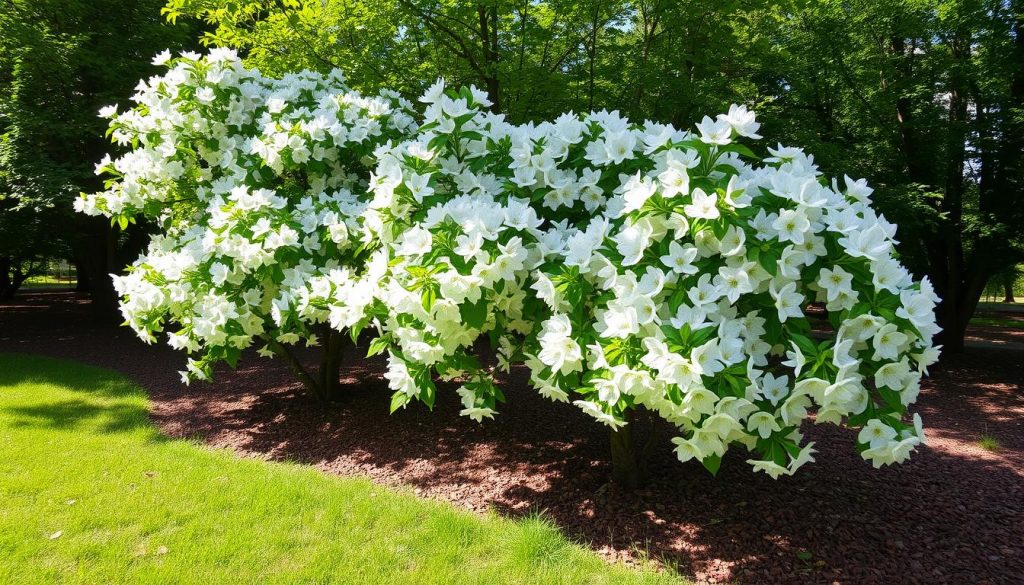
“By carefully curating a selection of companion plants, gardeners can enhance the visual impact of the amelanchier and create a cohesive, visually stunning landscape that delights the senses throughout the seasons.”
Propagation and Care
Growing the beautiful amelanchier, part of the rosaceae family, is easy for gardeners in the UK. You can grow more or share with friends using different methods.
Seeds are a simple way to start amelanchier. Collect them in autumn, keep them cool and dry, then sow in spring. For faster growth, take stem cuttings in summer and root them. You can also divide the plant to create new ones.
Amelanchier plants need little pruning. Trim any stray branches in late winter or early spring. They prefer well-drained, slightly acidic soil and lots of sunlight.
Keep them moist in the first year, but amelanchier can handle some drought later. With these easy care tips, your UK garden will bloom with amelanchier beauty for years.
| Propagation Method | Timing | Recommendations |
|---|---|---|
| Seed | Autumn to Spring | Collect seeds in autumn, sow in spring |
| Stem Cuttings | Summer | Take cuttings and root in well-draining medium |
| Division | Spring or Autumn | Split and replant root sections |
“With proper care, these versatile plants can be enjoyed for years to come in the UK garden.”
Conclusion
The Amelanchier, or Serviceberry, is a top pick for UK gardens. It’s part of the Rosaceae family and brings many benefits. It can be a main feature, a hedge, or add to a bigger design, making any garden look better.
Its beautiful spring flowers, tasty summer berries, and colourful autumn leaves make it special. The Amelanchier lamarckii is especially popular. It’s hardy, easy to care for, and attracts wildlife, making it a favourite among gardeners.
Adding an Amelanchier to your garden is straightforward. It needs simple soil and sunlight. This plant is both beautiful and useful, perfect for its looks or for eating. The Amelanchier is a must-have for UK gardens, offering beauty and bounty all year.
FAQ
What is an Amelanchier?
The Amelanchier is a type of flowering plant. It belongs to the Rosaceae family. It’s also known as Serviceberry, Juneberry, or Shadbush, found in North America and Europe.
What are the most popular varieties of Amelanchier?
Popular Amelanchier varieties include Amelanchier lamarckii, Amelanchier canadensis, and Amelanchier arborea.
Why is the Amelanchier considered a hardy and low-maintenance plant?
The Amelanchier is hardy and easy to care for. It grows well in different soils and weather. It prefers sun or shade and needs little pruning, perfect for UK gardens.
What makes the Amelanchier’s spring blossoms so captivating?
The Amelanchier’s spring flowers are amazing. They bloom in early spring with white or pink clusters. The flowers smell great, adding beauty to the plant.
Can the Amelanchier’s berries be eaten?
Yes, the Amelanchier’s berries are edible. They ripen in summer. The berries are sweet and tangy, great for eating fresh or in recipes.
How does the Amelanchier’s autumn foliage contribute to its visual appeal?
The Amelanchier’s autumn leaves are stunning. They turn into vibrant colours like reds, oranges, purples, and burgundies. This makes the plant beautiful all year.
In what ways can the Amelanchier be used in landscaping?
The Amelanchier is versatile in landscaping. It can be a small tree, shrub, or hedge. This makes it easy to fit into many garden styles.
How does the Amelanchier attract wildlife to the garden?
честные казино с быстрыми выплатами
бездепозитные бонусы казино
играть в лучшем казино на деньги
база казино с бездепозитным бонусом
онлайн казино России
casino oyunu
The Amelanchier attracts wildlife with its flowers and berries. Bees, butterflies, and birds love it. Small mammals also enjoy the fruits.
What are the soil and sunlight requirements for growing Amelanchier?
Amelanchiers like well-drained, slightly acidic soil. They do well in sun to shade. They’re easy to care for and add beauty to gardens.





